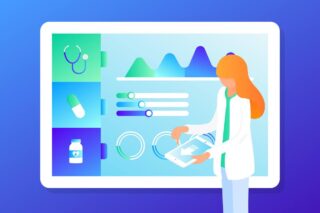
Your Health Magazine
4201 Northview Drive
Suite #102
Bowie, MD 20716
301-805-6805

More Family/Primary Care Articles
How Obtained Data from Healthcare Breaches is Used

Imagine waking up to find your personal medical records are not only in the hands of cybercriminals but are being sold to the highest bidder on the dark web. This alarming scenario is a reality for millions. In 2020 alone, the healthcare sector experienced over 600 data breaches, affecting more than 26 million individuals. The stakes are high—compromised health data can lead to identity theft, financial ruin, and even life-threatening situations. In this article, we dive into the intricacies of how obtained data from healthcare breaches is used, showcasing real-life cases and offering actionable insights to safeguard against these pervasive threats.
Characteristics of Healthcare Data Breaches
Types of Data Involved
Healthcare data breaches typically involve three main types of information:
- Personal Identification Information (PII): This includes names, addresses, dates of birth, and Social Security numbers.
- Medical Information: Compromising diagnoses, treatment records, medical history, and prescription details.
- Financial Information: Billing information, insurance details, and payment records.
Methods of Breach
Data breaches in healthcare can occur through various means such as:
Hacking: Unauthorized access to healthcare systems via cyber attacks.
- Phishing Attacks: Fraudulent communications designed to trick employees into divulging sensitive information.
- Ransomware: Malicious software that encrypts data, demanding a ransom for its release.
- Insider Threats: Disgruntled employees or contractors who misuse their access to data.
- Physical Theft: Stealing devices like laptops or mobile phones containing sensitive information.
Exploitation of Compromised Healthcare Data
Identity Theft and Fraud
Financial Fraud: Cybercriminals leverage stolen PII and financial details to commit fraud. This can include opening credit accounts, taking out loans, or making unauthorized purchases in the victim’s name.
Medical Identity Theft: This type of fraud involves using someone’s medical information to receive medical services or prescription drugs, or to file fraudulent insurance claims. The consequences can be severe, leading to inaccurate medical records and potential health risks for the victim.
Insurance Fraud
Stolen insurance information can be exploited to file false claims, resulting in significant financial losses for both insurance companies and patients. This type of fraud increases healthcare costs and impacts the premiums and coverage options available to legitimate policyholders.
Extortion and Ransom Demands
Cybercriminals frequently demand ransom from healthcare providers to restore access to encrypted data. In many cases, they also threaten to release sensitive patient information if their demands are not met, putting both patients and providers in a difficult position.
Illegal Sales on the Dark Web
Healthcare data is a hot commodity on the dark web, where it is sold to other criminals or unethical entities. The value of this data stems from its sensitivity and the various ways it can be exploited for further fraud or intelligence gathering.
Corporate Espionage
In some cases, stolen data is used for corporate espionage. Competitors may seek out proprietary medical research, development strategies, or other confidential business information to gain a market advantage. This can lead to the loss of intellectual property and significant financial damage.
Case Studies Highlighting the Impact
Anthem Inc. Breach (2015)
One of the largest healthcare breaches in history, the Anthem Inc. breach affected nearly 79 million individuals. Attackers accessed a wealth of personal information, including names, birthdates, and Social Security numbers. The aftermath saw a significant increase in identity theft and fraudulent activities linked to the stolen data.
Premera Blue Cross Breach (2014-2015)
This breach compromised the personal and medical information of 11 million individuals. The fallout included extensive financial and reputational damage to the company, as well as significant distress and potential health risks to the affected individuals.
Strategies to Mitigate Risks
To combat the exploitation of healthcare data, organizations must adopt comprehensive cybersecurity strategies:
HIPAA Compliant Email
Ensuring that communications are secure is a critical aspect of protecting healthcare data. One effective measure is the use of HIPAA compliant email services. These services are designed to meet the stringent requirements set forth by the Health Insurance Portability and Accountability Act (HIPAA), which mandates the protection of patient information. HIPAA-compliant email services encrypt emails in transit and at rest, ensuring that sensitive information cannot be intercepted or accessed by unauthorized parties. They also include features such as secure login, access controls, and audit logs to monitor email activity. By adopting HIPAA-compliant email solutions, healthcare organizations can significantly reduce the risk of data breaches and maintain the confidentiality and integrity of patient communications.
Robust Encryption
Encrypt sensitive data both in transit and at rest to ensure it is protected from unauthorized access.
Regular Security Audits
Conduct frequent security audits to identify and address vulnerabilities within the system.
Employee Training
Implement ongoing training programs to educate employees about cybersecurity best practices and how to recognize common threats such as phishing attempts.
Multi-Factor Authentication (MFA)
Use MFA to enhance the security of systems that access sensitive data, requiring multiple forms of verification.
Incident Response Plans
Develop and regularly update incident response plans to quickly address breaches and mitigate damage. These plans should include clear protocols for containment, eradication, and recovery.
Conclusion
The misuse of obtained data from healthcare breaches presents a severe threat to individuals and the healthcare industry as a whole. By understanding the methods used by cybercriminals and implementing robust security measures, healthcare organizations can better protect their data and maintain the trust of their patients. Continuous vigilance and a proactive approach to cybersecurity are essential in safeguarding sensitive healthcare information in today’s digital landscape.
Other Articles You May Find of Interest...
- What to Consider When Planning for Your Family’s Long-Term Health
- Lab Results at Your Fingertips: The Rise of At-Home Health Testing
- Preventive Healthcare Habits for a Safer Future
- When Should You Use an Antimicrobial Spray for Maximum Benefits?
- How Long to Abstain from Alcohol Before a Liver Function Test: A Complete Guide
- Why NPs Are Integral to Achieving Healthcare Objectives
- Best Practices for Your First Health Screening
















